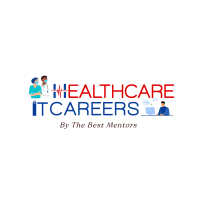1. HOW TO PREPARE AN INTERVIEW FOR CLINICAL DATA MANAGEMENT (CDM)
Here is one more interesting Update for you…
How to prepare an Interview for Clinical Data Management (CDM)

INTRODUCTION
Clinical data management (CDM) is the collection and management of data in an effective and efficient manner for the purpose of clinical research. Clinical data management is being carried out to obtain high quality, error-free information and data from the clinical trials.
Clinical data management involves data collection, data storage, record keeping, data protection, destroying the data and sharing and reporting the data.
The process of collecting and managing research data is done in accordance with the standards set by the regulatory authority such as GCDMP by Society for CDM, CDISC and 21 CRF Part 11.
IMPORTANCE OF CDM
Clinical Data Management plays a crucial role in clinical research.
- Data quality assurance
- Protection of data loss
- Privacy and Security of data
- Precise collection of data for Statistical analysis and reporting
- Data integrity
ROLES INVOLVED IN CDM
- Data manager- Supervises the process of CDM
- Database programmer or designer – performs CRF annotation, data validation, layout for data entry
- Medical coder – Convert the obtained data into universally recognized medical codes
- Clinical data analyst – Designs the CRF and develops discrepancy protocols
- Quality control associate – Verify the accuracy of data and performs data audits
- Data entry associate – Tracks the data from CRF pages and entered into a database
- Clinical research associate – Serves as a go between the sponsors, trial participants and employees
- Biostatistician – Conduct statistical analysis of the study
- Medical Writers – Prepare the study reports

STAGES OF CDM
CDM process main objective is to give precise, valid and statistically sound data. The process starts even before the beginning of clinical trials.
1.Data Management Plan (DMP)
DMP document is the roadmap that describes CDM activities to be done throughout the clinical trials.
2.Case Report Form
A CRF or e-CRF is a printed or electronic questionnaire for collection of data from the study participants.
3.Database Design
The data collected from the trial participants are will be entered in a CRF layout designed for data entry. The database screened with dummy data before the real data capture.
4.Data Collection
The data will be collected using CRF or e-CRF. In e-CRF, the chances of error are less.
5.CRF Tracking
The data entered in the CRF will be observed and checked by Clinical Research Associate (CRA) for the completion of CRF and given to the CDM team. The collected CRFs are tracked for the missing details, illegal data to obtain the standard data.
6.Data Validation
It is the process of testing the validity of data, its accuracy and integrity according to the protocol specification. Electronic edit checks, Source Data Verification (SDV), Data anonymization methods are used for the validation.
7.Discrepancy Management
Discrepancy management helps in cleaning subject data in CDMS and gathers evidence of the deviations observed in the data. It involves reviewing discrepancies, inquiring the reason and solving them with documentary proof or declaring as unsolvable.
8.Medical Coding
Medical coding helps in converting the reported medical terms into standard dictionary terms for the data consistency and to avoid data duplication. The dictionaries commonly used are MedDRA and WHODD.
9.Database Locking
The final data validation is run after a proper quality check and assurance. After all the data management activities are completed, approval for locking the database is obtained from all stake holders. Then the data is locked and extracted for statistical analysis.
SOFTWARES USED IN CDM
The commonly used software in CDM
- Oracle clinical
- Clintrial
- eClinical Suite
- Rave
- Macro
2. HOW TO PREPARE AN INTERVIEW FOR MEDICAL CODING
INTRODUCTION
Medical Coding is booming and is a great career option that is in high demand especially during the ongoing pandemic. It is the process of taking a patient’s health care information like medical procedures, diagnosis, necessary medical equipment, and medical services information from the physician’s notes.
A medical coder transforms this information into universal medical alphanumeric codes. When we go to the doctor, come home and wait for the bill or the report, that is where Medical coders come in.
They are responsible for compiling the patient data.
- ROLES AND RESPONSIBILITIES OF A MEDICA
LCODER
rrROLES AND RESPONSIBILITIES
•Updating patient records with standardized information needed for data management and billing purposes. •Analyzing medical charts and assigning codes.
•Assigning the code specific to each diagnosis and procedure every time a doctor, nurse, or other healthcare provider performs a service.
- HOW TO BECOME A MEDICAL CODER ?
- The need for medical coders will only keep increasing with the rising demand for digitally-led medical infrastructure. If you are planning to pursue your professional career in this field, you need to go through the following hurdles.
- Complete Medical Coding Training
- After finishing school, you can pursue medical coding certification courses from renowned organisations.These programs are usually for less than a year and are available online. You can also pursue a certificate course in medical coding from universities and colleges.
Certificate programs teach you the basics of disease processes, treatment procedures, terminology, body systems, and basic coding in ICD-10. Students can also choose to pursue an associate degree which is a 2 years course or a bachelor’s degree in healthcare administration or health information management which is a 3 years course.
- Give the Required Exams
- In order to get certified, you have to give certain exams. Certified medical coders have better job prospects and salary packages as compared to non-certified medical coders. You can specialise in any field you want. The medical coding programs that you attended prepare you for these certification exams

Gain Work Experience
After getting certified and completing your courses, the next step is to get employed. Completing your medical coding course for professional associations such as AHIMA or the AAPC can unlock employment opportunities.
Medical coders can work from home as many medical facilities get medical coding outsourced. After gaining some work experience, you can also attend additional courses in specific areas and brush up on your skills.
- Eligibility Requirement to Pursue Medical Coding
1.Completed Schooling
2.A bachelor’s degree or an associate degree in healthcare related fields or in life sciences.
3.A medical training program
4.Being certified as a medical coder by a accredited institution
5.Knowledge of the basic medical codes used.
6.Analytical ability to read and analyse medical records by using the right codes and producing relevant data.
7.Basics of disease processes, treatment procedures, terminology, body systems.
- Courses in Medical Coding
•Advanced ICD-10-CM Code Set Training
•Advanced Neurology and Neurosurgery Coding
Course
•Behavioral Health Coding Training
•Dental Billing and Coding with Medical Cross Coding
•EHR and EMR Specialist Course
•Evaluation and Management (E/M) Online Training.
•Home Health Coding Course
•Physical Medicine and Rehabilitation (PMR) Coding
•Skilled Nursing Facility Coding Course
•Anatomy & Physiology
•Medical Terminology
•Pathophysiology and Pharmacology
•CD-10-CM
•ICD-10-PCS
•CPT Coding
•CPT Coding
➢ Medical Coding Scope and Salary
The scope for medical coders is widely increasing, with the employment of medical coders projected to grow 15 percent by 2024. Medical coders can work in every type of health care facility like hospitals, clinics, medical facilities, rehabilitation centers, nursing homes, physicians’ offices, medical laboratories, etc. Medical coders can be employed as-
- Medical Records Coordinator.
- Coder.
- Medical Coding Specialist.
- Medical Billing Specialist.
- Medical Records Technician.
- Health Information Specialist.
- Medical Records Clerk.
- Health Information Clerk.
The average initial salary earned by a medical coder is Rs 4-6 lakhs per year and experienced medical coders can earn upto INR 15 lakh per year. In the USA, entrylevel positions start at an average of $35,000 (INR 2583162) per year while experienced workers can make up to $58,000 (INR 4280669) per year.
➢ List of Institutions Offering Medical Coding Course
•Medical Coding Inpatient DRG (PCS Practical Lab) on Udemy
•Academy of Medical Coders in India
•Keiser University
•Fisher College
•Herzing University
➢ Medical Coding Fee Structure
The Medical Coding course fees can range from anywhere between 20,000 to 2 lakhs per annum depending upon the level of proficiency as well as your university/institute.
14
➢ FAQ’S IN MEDICAL CODER INTERVIEW
- what is medical coding?
- what are skills that a medical coder should Posses?
- what are some common phrases used in clinical Coding?
- what are ICD codes?
- what are HCPCS codes?
- when are HCPCS modifiers used?
- what are DRG codes?
➢ CONCLUSION
Medical coding can be a great career choice for many can be a different reasons. Qualified Health Care Providers are always in high demand. A medical coders can fulfill a vital role. Medical Coders can work in a diverse range of environments including medical clinics, doctors, Surgeries, hospitals & Insurance companies, They are some benifits if you are considering Career in medical coding
- Great pay.
- Many opportunities.
- Short and Flexible training time.
- Work at home opportunities.
- Career satisfaction & Social interaction.
- Start your own business
3. HOW TO PREPARE FOR THE INTERVIEW OF COMPUTERIZED SYSTEM VALIDATION?

Before getting into the meaning of CSV, it’s crucial to understand how the Food & Drug Administration (FDA) define computer systems.
“CSV is a systematic process that involves a number of critical and important activities during the product life cycle, verifying that the final product quality complies according to regulatory requirements and will produce information or data that meets defined requirements.”
The list of CSV activities usually consists of:
- Specifying user requirements
- Defining functional requirement specifications
- Creating a Validation Plan
- Writing Operational Qualification (OQ) Scripts
- Maintaining system release documentation
Who needs Computer System Validation?
- Pharmaceutical companies: In the US and most developed countries, pharmaceutical businesses have to undergo CSV. In particular, they need to validate their system if their business produces or distributes drugs used for diagnosing or treating diseases.
- Storage and distribution providers: Businesses that store pharmaceuticals, biologicals, or cell-and-tissue products are obliged to complete CSV. Otherwise, the penalties might be as high as debarment or a criminal prosecution.
- Products that sell biologicals: A product can be defined as biological if it’s made from a therapeutic serum or a virus and used for injury or disease prevention and treatment. Vaccines are biologicals too.
- Medical devices distributors: By definition, medical devices comprise of any instruments used for diagnosis, treatment, or prevention of illnesses. The most common examples of such are lasers, medical implants, tongue depressors, thermometers (only medical), and prosthetics.
Benefits of CSV:
- Legal compliance with the FDA: after completing Computer System Validation, companies will be able to provide regulatory organs with all the needed documentation.
- Reduces compliance risks: Having empirical evidence of the fact that the system works as expected comes in handy during the inspections from regulatory organs.
- Discovers defects before a system build goes live: This way, pharmaceutical companies can avoid image losses or fraud.
- Provides companies with continuous improvement: Validation is a necessity for companies that constantly scale and add new features as it allows the development team to prevent tech debt from piling up.
- Maximizes system efficiency: If companies have validated systems, a business manager increases its future value and the efficiency of employers that use it. In the long run, CSV reduces both operating and labour costs.
Computer System Validation check list:
- Planning: at this stage, a company manager establishes the deadlines and the budget needed to carry out Computer System Validation. Also, all stages are broken down by time and monetary estimates.
- Defining user requirement specifications: Basically, this includes all the functions a system needs to carry out.
- Design specifications: At this point, a team involved in CSV decides the look of a given function and the way it should function in order to complete all tasks outlined during the previous stage.
- Configuring a system build: This stage consists of writing configure scripts that will design the software for a computer system.
- IQ tests: A testing team runs a range of scripts to determine if they have chosen the correct way to install the system into the user environment.
- PQ tests: a CSV engineer has to test worst-case scenarios to ensure a system would still work properly under poor conditions.
- Reporting: All planned activities are reviewed. A tester has to document the result of validation and organizes them as proof that a system is ready for release.
Examples of Computer System Validation:
- Control systems: The technology stack of modern control software is extremely broad — there are sequential function charts, function blocks, ladder logic, and so on. That’s why it’s wise to use a matrix-based documentation system to validate such systems.
- Clinical, laboratory, or manufacturing database systems: Now, when the use of wearables to collect medical data is almost commonplace, there’s a lot of data systems have to manipulate and store. That’s why validating database systems requires constant innovation. The good news is, there is no lack of disruptive CSV practice. A group of Japanese scientists, for instance, has suggested a way to validate clinical database systems that use wearable by creating a custom data-flow model.
- Manufacturing execution systems: MES is a dynamic environment — that’s why, during validation, developers pay extra attention to assessing the performance of its workflows. Manufacturing execution systems are often tested by the configurable manufacturing models. A CSV engineer has to assess and approve of alternate paths, step-by-step operator procedures, dispense specs, and so on. The validation process has to enforce the security and compliance of an MES.
- Laboratory data capture devices: Validating data capture systems, testers rely heavily on Good Automated Laboratory Practices and the National Environmental Laboratory Accreditation Conference.
Automated laboratory equipment: The process of automated equipment validation consists of quality control checks, sustainability tests, the validation of analytical methods, and the qualification of analytical instruments.
